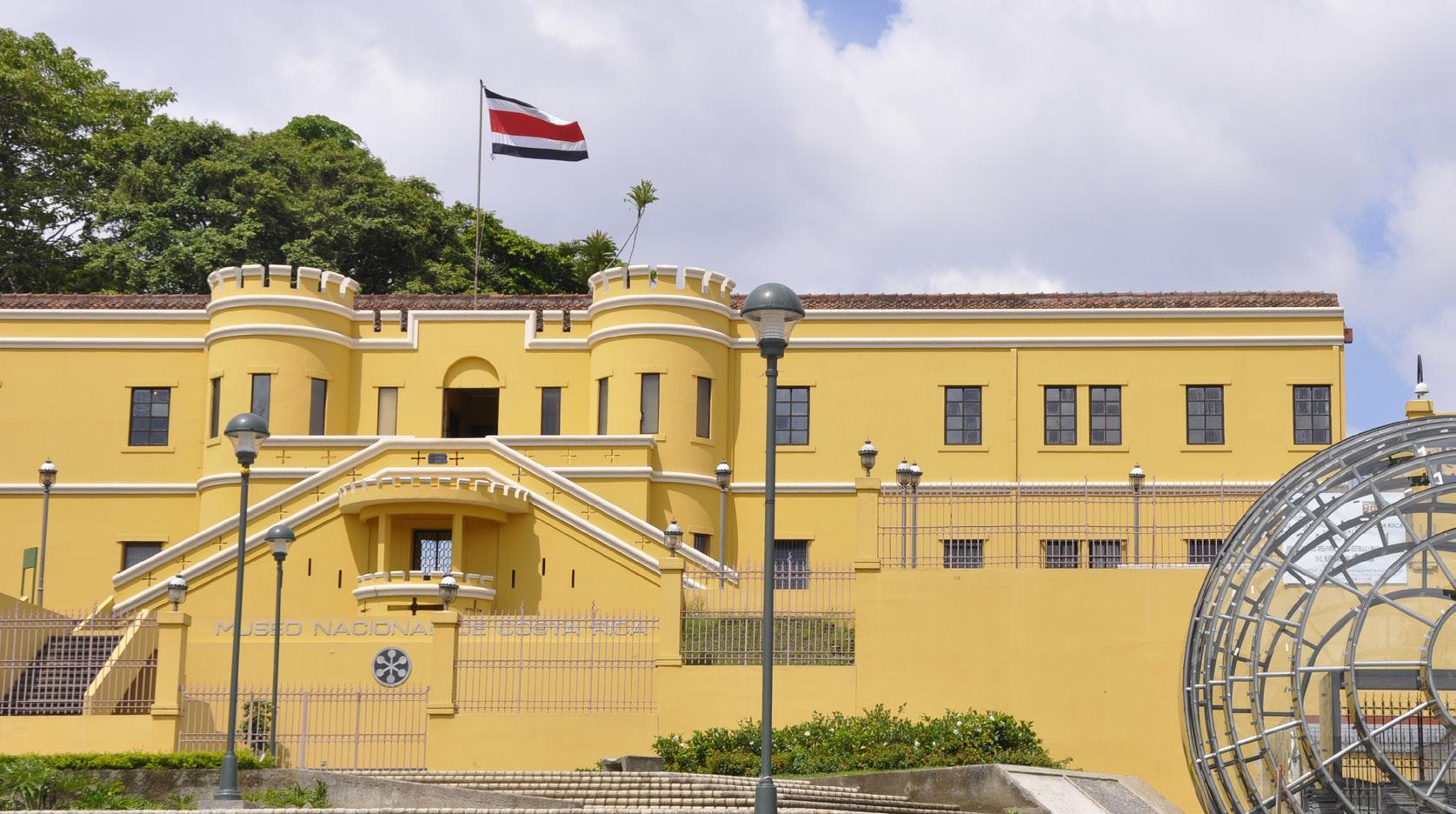
10 minute read
The Abolition of the Military Forces in Costa Rica. From Diplomatic Strategy to Human Development
DID YOU KNOW THAT SOME COUNTRIES DO NOT HAVE A STANDING ARMY? COSTA RICA ABOLISHED ITS ARMY 70 YEARS AGO—AND MANY ARGUE THAT IT HAS PLAYED AN IMPORTANT ROLE IN THE COUNTRY’S UNIQUE DEVELOPMENT CAPACITIES. BEYOND NATIONAL DEVELOPMENT, THE EARLY ELIMINATION OF THE ARMY IS ALSO AN ALTERNATIVE MODEL OF INTERNATIONAL RELATIONS.
THE PERSPECTIVE spoke to Carlos Cascante Segura, professor at the Universidad Nacional de Costa Rica, and Historian José David Cortes, to shed some light on the mechanisms that allow a country to function without an army and on the long process of peacebuilding and development.
Advertisement
Since 1949, the elimination of permanent military forces in Costa Rica has been inveterated by the Constitution. Whenever I ask a Costa Rican about the absence of military forces, they tell me that it was a positive decision as it permitted redirecting investments toward social and environmental policies. But what is the link between military forces and social development? How can a country located in a rather unstable region of the globe guarantee its security and sovereignty without military forces? The answers may be linked both to the historical heritage of Costa Rica and strategic international relations.
1948: Civil War and Civil Rights
At the turn of the 20th century, Costa Rica was mostly living off agriculture and exports of primary goods such as coffee and bananas, and as a consequence all power was concentrated in the hands of wealthy producers, explains historian José David Cortes to contextualize. However, the global crises of the first part of the century destabilized the export economy and opened the door, in the 1940s, to the unlikely governing alliance of the Republican party, the Catholic Church and the Marxist party.
Even though the new political forces intended to increase the social rights of the population, the system was still far from democratic. In 1948, José Figueres Ferrers fomented a coup against the President of Costa Rica. This marked the start of a very short civil war which ended with the escape of the defeated President to Nicaragua, the establishment of Figueres as the new President, and an agreement to democratize the system and increase the rights of the working class.
José David Cortes points out that Figueres and its new government’s “strongest ideology was social democracy (...), and they started a model of following social guarantees. Yet, not only did they maintain them but also, they expanded them. And here Costa Rica took such strong decisions as to nationalize the banking system (...) and create public institutions, public monopolies such as the Costa Rican Institute of Electricity, which currently operates and still maintains a certain monopoly at the electrical level, the National Insurance Institute, the Costa Rican Tourism Institute, among others.” As part of the strategy to reduce the spending in the army and to promote human development, permanent military forces were abolished in a symbolic ceremony on December 1, 1948.
A Small Country in the United States’ Backyard
Even if Costa Rica is the first country without an army, conveying a message of peace and a human-centered nation, it still had enemies— mainly because the country kept on supporting other regional revolutions, but also because it is located amidst many illegal trade routes. “We must eliminate this idea that Costa Rica has always been peaceful and calm in international relations, this is not true.” insists Professor Cascante Segura. Therefore, it is not that easy to dissolve an army but our experts explain how Costa Rica’s process went smoothly:
Firstly, the Costa Rican army, similar to many other Central American armies, was growing progressively weaker throughout the 20th century. When it was decided to eliminate the permanent military forces, they were already incapable of protesting. “This would never have been possible if the army was strong” repeats Professor Cascante Segura. The difficulty laid, rather, in training the civil forces for their new tasks such as maritime and land surveillance.
Secondly, internal stability was guaranteed by growing civil mechanisms. Remember that before the civil war, the government was led by forces in favor of social rights? They shared a common interest in educating people and developing the civil powers of the country. Even before the war, they had laid the basis for stability based on education and consensus. These new policies were a source of national peace and internal control and, as a consequence, the need for military forces to maintain internal peace was continually diminishing. Furthermore, Costa Rica kept a clause in its constitution that it could call for temporary armed forces in case of emergency.
Last but not least is the international context: 1948 marked the beginning of the Cold War and some Latin American nations were already split and ravaged by ideological conflicts. In all of them, the regional hegemon—the United States—would add fuel to the fire by providing its support to the non-communist side, as it did in Nicaragua or even Argentina. No Central American country had an army capable of competing with the US forces, especially not the weakening Costa Rican army.
Before the Cold War, Costa Rica, unlike its neighbors, had kept relative political unity based on alliances and ideological balance. This permitted the development of a close, long-term relationship with the powerful big brother to the north. In 1948, “it made very little sense to have a large army if you know that, in the end, the one who will solve all problems is the United States” explains professor Carlos Cascante Segura. Furthermore, Costa Rica is part of the InterAmerican Treaty of Reciprocal Assistance (TIAR) of 1948 theoretically guaranteeing Costa Rica military help from other American nations (and especially from the US) in case of an attack. It has never been actively used by Costa Rica but it has been a deterrent to remind potential enemies that the most powerful army in the world is committed to defending the nation in case of aggression. With time, the treaty has been losing power and relevance and nowadays, other international tools are preferred.
Prof. Carlos Cascante Segure to THE PERSPECTIVE
Peace as a Diplomatic Instrument
If war and peace are all about strategic power games then what is the relevance of multinational treaties and international law?
It seems that many situations were too minor to mobilize foreign armed troops to Costa Rica, especially recurring tensions with Nicaragua. If the country had had its own army, some conflicts would likely have turned into violence. However, without an army, Costa Rica had no other choice than to resort to peaceful mechanisms to solve international conflicts. The latest example is a 2018 ruling of the International Court of Justice in The Hague, which solved a land and environmental disagreement between Costa Rica and Nicaragua.
Since Costa Rica has no military power, it had to build alternative diplomatic instruments. Professor Carlos Cascante Segura argues that no country has more legitimacy to promote peace than a country that cannot go to war. In this respect, Costa Rica has gradually dedicated itself to the promotion of international disarmament. For example, it has played a key role in the negotiations of treaties against conventional weapons and against nuclear weapons. In 1987, then-President Óscar Arias Sánchez received the Nobel Peace Prize for his essential role in the establishment of the Esquipulas Peace Agreement, an initiative that promoted reconciliation and peace in five Central American countries (Costa Rica, El Salvador, Guatemala, Honduras and Nicaragua). The UN also decided to establish its “University for Peace’’ in Costa Rica.

The Bellavista Fortress in the center of San José used to belong to the Costa Rican army. In 1948, the abolition ceremony was held there and in 1950 the building was turned into the National Museum.
© Peludis/Adobe Stock
Power relations are still essential to understand Costa Rica’s strategy, which turned a “weakness” into a strength by becoming a peaceful third party serving as a mediator in case of international conflicts. In an era when humanitarian law is expanding and instruments for pacific conflicts resolution are sought, Costa Rica is seen to be in a credible position to use and contribute to the reinforcement of international law, explains Profesor Cascante Segura.
Beyond its role in driving international peace agreements, Costa Rica’s successful demilitarization strategy also serves as a precursor of an alternative model in international relations. Since 1948, many small countries have chosen to eliminate their army, among them Costa Rica’s neighbor Panama.
Stability, Education and Development
Costa Rica’s elimination of military forces did not only play a role on the international level: it also contributed to national development. Today, on many indicators—such as poverty reduction, security, health, natural resource conservation— Costa Rica has been performing better than its neighbors, making it a fascinating case for development economists to study. Understanding the abolition of the military reveals some elements of Costa Rica’s success story.
The continuous moderation in politics during the Cold War preserved Costa Rica from imperialism but also is deemed to be a key to stability and institutional development. The story of many Latin American countries has been interrupted by coups d’état in which the armed forces played a central role and one of the motivations for the abolition of the army is to avoid further military takeovers. “It was necessary to finish off with structures who at some point could enter into a counter-revolutionary process” analyzes professor Cascante Segura. José David Cortes also points out that in the absence of such power, Costa Rica’s internal security is higher and democratic institutions have been more stable. Today, some Central American countries still live in fear of having the army seizing power, but several Costa Ricans shared with me that they feel safer in a country that does not have military forces.
However, the role of abolition must not be overestimated, and removing the army is not a secret recipe for peace. For example, Haïti tried to remove its army but remained confronted with insecurity. In the case of Panama, it is still too early to tell what are the long-term benefits. In Costa Rica, the governmental will for infrastructure building and natural resource protection are non-neglectable factors in the development path of the country. José David Cortés explains that development is not only about the abolition of the army but also due to having a strong democratic government which has been maintained over decades. Until today, the country has been led by an assembly of many parties, and even though corruption remains an issue, trust in the government is high, which also contributes to long-term stability.
Eliminating the army is not only about peace: It is also related to the reallocation of public funds into health and education infrastructure. Following the agenda of the new social-democrat government, 20.3% of the national budget was invested in education in the 50s and since then has been oscillating between 24.8% and 37.5%. Health investments also rose drastically and today Costa Rica’s health system is rated as one of the best on the continent in terms of access and services. Not all the education and health investments are savings from the army, yet the abolition sent a strong message about the new political strategy and aided in building trust. All the factors cited above played a role in the country’s overall growth and according to a study from the Universidad de Costa Rica found that the annual GDP of Costa Rica has been on average 1% higher every year between 1950 and 2010 compared to simulated scenarios without army abolition.
Peace and Development as Mutually Reinforcing
Costa Rica’s positive development path is not the result of a miracle solution, but rather an accumulation of conjunctural and strategic events that favored human capital development over state empowerment. Without an initial investment in social infrastructure, Costa Rica would not have had the stability to abolish its armed forces which, in turn, played a key role—both symbolic and monetary—in human development. Of course, future challenges lie ahead, but today Costa Rica is endowed with stable educational and health infrastructures, wide-reaching natural conservation policies, and a tradition for unity and collaboration which has again proven its use during the COVID-19 crisis. When on March 16, 2020 the first infection of coronavirus was confirmed in the country, Costa Rica could quickly transform its well-functioning health system to provide emergency care when needed.
AURÉLIE POLLAK
Aurélie is currently on a research stay in Costa Rica. She is investigating innovative practices related to the country’s high human development rates and environmental protection policies for her Master’s thesis in Innovation and Global Sustainable Development at Lund University.

Coffee production has played an important role in Costa Rica‘s history.
© somchai20162516/Adobe Stock










